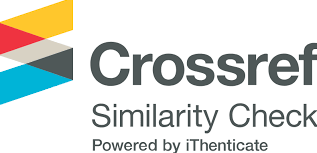INFILTRATION CHARACTERISTICS OF SOIL UNDER CINNAMON AND ACACIA PLANTATION FOREST IN HEADWATER OF VIET NAM
Keywords:
Acacia forest, Cinnamon forest,, dye tracer, infiltration rate, spatial infiltration,, vegetation coverAbstract
For determining infiltration characteristics of soil under Cinnamon and Acacia plantation forest, double rings infiltrometer was used in 15 different locations (5 times for one part) of up - hill, mid - hill and downhill part in each kind of forest. Research was conducted from June to September 2017. Dye tracer - a new method was used to determine spatial distribution of infiltration in three plots.
The first plot had a Cinnamon tree, the second plot had an Acacia tree and the reference plot did not have any tree. Influencing factors such as dry bulk density, vegetation cover, porosity and soil moisture were also analyzed. After carrying out the research, some main findings were: (1) Infiltration rate in both kinds of forests tended to be decreased over time, the rate was the highest at the downhill and the lowest at the middle hill. Both initial and stable infiltration rate of Acacia forest (13.5 and 2.2 mm/min respectively) are higher than those of Cinnamon forest (9.0 and 1.3 mm/min respectively). The infiltration rate in both types of forests were not high and they have chance to occur overland flow; (2) Spatial infiltration distribution of dye in three plots was different, dye tended to be infiltrate with the deepest depth and the biggest area into soil at reference plot (1177 cm2 and 70 cm in 4th layer), dye tended to infiltrate bigger in Acacia plot (90 to 427 cm2) and deeper in Cinnamon plot (40 to 60 cm); (3) Infiltration rate
had positive relationship with vegetation cover, soil moisture and porosity. The findings implied that infiltration rate under Acacia plantation forest has been higher than Cinnamon forest
References
1. Alaoui A, Goetz B, 2008, Dye tracer and infiltration experiments to investigate macrospore flow, Soil Science Section, Geoderma (Amsterdam) Journal, vol. 144,, pp. 279 - 286
2. Ben - Hur M, Wakindiki I.C, 2004, Soil mineralogy and slope effects on infiltration, interrill erosion, and slope factor, Water Resour. Res., vol 40, issue 3, pp. 34 - 42
3. Brockwell J, Suzette DS, Alison CJ and Waayers M, 2005, Nitrogen Fixation in Acacias: an Untapped Resource for Sustainable Plantations, Farm Forestry and Land Reclamation, pp.132 - 145
4. Chyba J, Kroulik M, Lev J and Kumhala F, 2013, Influence of soil cultivation and farm machinery passes on water preferential flow using brilliant blue dye tracer, Agronomy Research 2013 Vol.11, pp. 25 - 30
5. Dien PV. 2006. Research on water holding capacity in some types of vegetation cover in Hoa Binh Hydropower Plant. Doctorate in Agriculture, VietNam National University of Forestry.
6. Dowling A.J,Webb A.A, and Scanlan J.C,1986, Surface soil chemical and physical patterns in a brigalow -Dawson gum forest, central Queensland, Australian Journal of Ecology, vol. 11, pp. 45 - 47
7. Dune T, Zhang W, Aubry BF. 1991. Effects of rainfall, vegetation and microtopographyon infiltration and
runoff. Water Resources Res, vol 46, issue 7, pp. 67 - 74
8. Dung BX, Linh PT, Thuy TT, Linh NTM, Kha LN, Trang PTT, 2016, Infiltration characteristics of soil under Eucalyptus plantation forest in headwater of Viet Nam, Forestry Science and Technology magazine vol 2 (2017), pp. 63 - 74
9. Haws NW, Liu B, Boast CW, Rao PSC, Franzmeier DP, 2004, Spatial variability and measurement scale of infiltration rate on an agricultural landscape. Soil Science Society of America Journal vol 68, pp. 1818 - 1826
10. Horton RE, 1933. The role of infiltration in the hydrological cycle. Transactions, American Geophysical Union14, pp. 446 - 460
11. Onda Y, Yukawa N. 1995. The influence of understories on the infiltration capacities of Chamaecyparis obtusa plantation, Journal of Japanese Forestry Society vol 77, pp. 399 - 407
12. Pagliai M, Vignozzi N,2004, The Soil Pore System as an Indicator of Soil Quality, Soil and Tillage Research vol 79, pp. 131 - 143
13. Rotkittikhun P, Chaiyarat R, Kruatrechue M, Pokethitiyook M, Baker A, 2007, Effects of soil amendment on growh and lead accumulation in grasses Vetiveria zizanioides and Thysanolaena maxima grow in lead -contaminated soil, School of Botany Journal vol 66, pp. 45 - 53
14. Sharma ML, Gander GA, Hunt CG, 1980, Spatial variability of infiltration in a watershed. Journal of Hydrology vol 45, pp. 101 - 122
15. Weiler MH, McGuire KJ, and McDonnell JJ, 2002, Infiltration Dye Experiment, Journal of Hydrology vol 14,pp. 6 - 8
16. Zaslavsky D, and Sinai G, 1981, Surface hydrology: I-Flow in sloping, layered soil, Water Resource Research vol 42, pp. 142 - 149.








